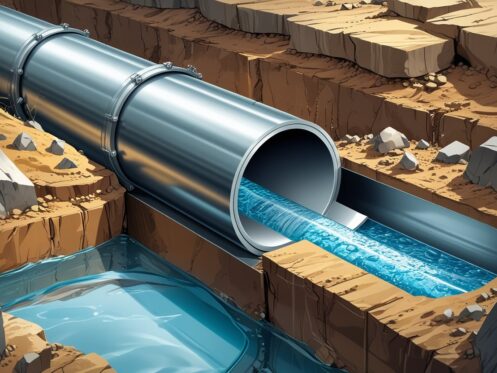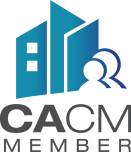As a homeowner or business owner, maintaining clean and safe water supply lines is essential. Potable water pipe lining is an innovative solution that rehabilitates aging pipes without the need for extensive excavation, preserving both your property and the quality of your water. This trenchless technology allows for the installation of a new lining inside existing pipes, effectively sealing leaks and extending the lifespan of your water infrastructure.
Using this method can significantly reduce the time and costs associated with traditional pipe replacement. By opting for potable water pipe lining, you can avoid the mess and disruption of digging up your yard or property. Efficient and effective, this solution ensures that your potable water remains uncontaminated while enhancing your plumbing system’s overall functionality.
For residents in the Anaheim area, companies like Splash Plumbing specialize in potable water pipe lining and other plumbing services. With years of experience and a reputation for quality, they can help you navigate the best options for maintaining your water lines and ensuring reliable service. Keep your potable water supply safe and efficient by considering this modern approach to pipe repair.
Understanding Potable Water Pipe Lining
Potable water pipe lining is essential for maintaining safe and functional water systems. This process helps to repair and strengthen existing pipe structures, ensuring that the water delivered to your home is safe and free from contaminants. Let’s explore the intricacies involved in this process.
Definition and Core Principles
Potable water pipe lining refers to methods that repair and reinforce water pipes carrying safe drinking water. The core principle involves creating a durable barrier within the existing pipe using materials certified to meet NSF/ANSI 61 standards, ensuring they are safe and non-toxic for drinking water. This method typically employs a “pipe within a pipe” technique, where a new lining is inserted to form a protective layer against corrosion and leaks.
How Pipe Lining Works
The pipe lining process begins with a thorough inspection of the existing pipes to identify issues like corrosion or leaks. Once the assessment is complete, the pipes are cleaned to remove any debris. Next, a resin-impregnated liner is inserted into the damaged pipe. This liner is then cured, often using heat or UV light, allowing it to harden and bond with the pipe’s interior. This creates a robust barrier that enhances the pipe’s structural integrity and improves its lifespan. The resulting lining is both strong and effective in preventing further corrosion and contamination.
Types of Pipe Lining Solutions
There are various types of pipe lining solutions available, each tailored to specific needs. One common method is Cured-in-Place Pipe (CIPP) lining, which involves installing a flexible liner that is cured in place. This method is efficient and minimizes disruption. Another solution is the use of corrosion control coatings, which directly apply a protective layer inside the pipe to prevent rust and corrosion. Both methods are designed to create a strong barrier that preserves the quality of your potable water. For effective results in your plumbing projects, consider reaching out to professionals like Splash Plumbing, who specialize in these advanced techniques.
Key Applications and System Compatibility
Potable water pipe lining serves various essential applications across different systems. Each application has specific compatibility requirements ensuring safe and efficient operation while maintaining the integrity of the existing infrastructure.
Potable Water Systems
Potable water systems are crucial for delivering clean and safe drinking water. Pipe lining technologies, such as CIPP (Cured-In-Place Pipe), effectively rehabilitate aging potable water pipes with minimal disruption. These linings create a new pipe within the old one, sealing leaks and preventing contamination. Using materials compliant with health regulations is essential, as they must not leach harmful substances. This ensures that your drinking water remains safe while extending the lifespan of the existing lines. For reliable solutions in this area, a plumbing service like Splash Plumbing can assist with your needs.
Fire Suppression and Sprinkler Systems
Fire suppression systems rely on a network of pipes to deliver water in emergencies. These systems must be reliable to ensure safety and compliance with local codes. Potable water pipe lining can help restore and enhance the integrity of fire suppression lines, ensuring they operate effectively when needed. Lining applications can repair leaks and corrosion in both above and underground piping systems without the need for extensive excavation. This minimizes downtime and disruption, which is especially beneficial in commercial environments. Properly lined pipes maintain the necessary pressure and flow rates, ensuring that systems activate promptly in emergencies.
Commercial and Industrial Pipelining
In commercial and industrial settings, pipelining solutions are necessary to maintain efficient operations. These environments often utilize pressurized systems that must operate without leaks. Potable water pipes and additional conduits can benefit from lining to mitigate corrosion and wear. This process reduces the risk of system failures and prolongs the service life of your piping infrastructure. Advanced technologies allow for trenchless repairs that minimize disruption to your operations. Splash Plumbing offers expertise in these industrial applications, ensuring your systems remain operational and compliant.
HVAC and Chilled Water Applications
HVAC systems and chilled water applications rely on the integrity of their piping to circulate energy efficiently. Pipe lining can be an excellent solution for repairing leaks in these systems while ensuring minimal impact on overall performance. Maintaining optimal thermal efficiency and preventing water loss is critical in HVAC operations. Using lining technology extends the life of your pipes and reduces energy costs associated with inefficient systems. For HVAC concerns, working with skilled professionals ensures the proper implementation of solutions in conjunction with the existing systems.
Pipe Lining Methods and Technologies
Pipe lining technologies have revolutionized how we address the maintenance and repair of potable water lines. These innovations not only protect water quality but also minimize disruption to infrastructure. Key methods include trenchless techniques, epoxy coatings, and advanced resin technologies that meet rigorous industry standards.
Trenchless and Non-Invasive Techniques
Trenchless methods enable the restoration of pipelines without extensive excavation. This approach minimizes disruption and is often considered more environmentally friendly. Techniques like no-dig pipe lining involve inserting a lining into existing pipes, creating a strong, joint-free structure that restores functionality.
Companies like Splash Plumbing utilize these advanced methods to enhance the durability of water lines. By avoiding traditional digging, you save on restoration costs and reduce the environmental impact associated with construction. These methods comply with ASTM F1216 guidelines, ensuring safety and longevity.
Epoxy Coatings and Proprietary Approaches
Epoxy coatings offer a reliable solution for enhancing the lifespan of water pipes. This method applies a cured epoxy product to the interior of pipes, creating a protective barrier against corrosion and leaks. Proprietary techniques may use specialized formulation for added strength, crucial for maintaining water safety.
Using epoxy can be a cost-effective alternative to full pipe replacement. For example, the Nudrain and Nuline systems utilize advanced resin technology to ensure a safe and durable outcome. When selecting a contractor, look for Nuflow certified contractors to guarantee adherence to high-quality standards.
CIPP and Advanced Resin Technologies
Cured-in-Place Pipe (CIPP) technology is a prominent method in pipe restoration. This technique involves inserting a resin-saturated liner into existing pipes. Once the liner is in place, it is cured, forming a new pipe within the old one. CIPP is non-invasive, minimizing disruptions and reducing service interruptions.
Using advanced resin technologies ensures that your potable water lines are both safe and effective. These resins are designed to resist degradation from elements that typically compromise pipe integrity. Engaging experienced professionals ensures that the procedure aligns with industry best practices.
Product and Contractor Certifications
Certifications play a critical role in ensuring quality in pipe lining services. Certified contractors have undergone specific training and adhere to industry standards, such as those set by ASTM. An experienced plumbing service, like Splash Plumbing, maintains these certifications to provide peace of mind to clients regarding the safety and effectiveness of their repairs.
You should always verify the credentials of contractors before engaging in any pipe restoration work. Certification indicates that contractors are equipped to deliver high-quality services, enhancing the longevity and safety of your potable water piping systems.
Benefits of Potable Water Pipe Lining
Potable water pipe lining offers various advantages that can greatly enhance your plumbing infrastructure. This method restores and protects existing pipes while providing long-term solutions to common issues associated with traditional methods. You can expect improvements in durability, cost savings, and reduced disruption during installation.
Extending Life Expectancy
Lining your potable water pipes can significantly extend their life expectancy. The epoxy materials used in the lining process create a robust barrier against corrosion and leaks. This preventative measure helps to avoid frequent repairs or replacements, ensuring that your water system remains safe and functional for years to come.
With minimal surface restoration required, you will find it easier to maintain the aesthetic appeal of your landscape. The durable lining also resists damage from environmental factors, allowing your plumbing system to withstand the test of time.
Minimizing Downtime and Disruption
One of the standout benefits of potable water pipe lining is its ability to minimize downtime and disruption. Traditional pipe replacement often requires extensive excavation, leading to traffic diversion and significant landscape damage.
In contrast, pipe lining employs a trenchless approach. This means that most of the work can be done with minimal disturbance to your property. You can continue your daily activities without major interruptions, making it a more convenient option for residential and commercial spaces.
Cost-Effectiveness and Reduced Restoration
Potable water pipe lining can be a cost-effective solution compared to complete pipe replacement. The process can save you between 20% to 60% on costs related to excavation and restoration projects. Additionally, the durability of the lining material means fewer repairs in the long run.
By opting for this restoration method, you also avoid the expense associated with traffic diversion and extensive restoration work. With Splash Plumbing, you gain a reliable partner that prioritizes effective, budget-friendly solutions for your potable water needs.
Selection Criteria and Implementation Considerations
When considering potable water pipe lining, it’s vital to evaluate the current infrastructure and specific pipeline conditions. Understanding the intricacies involved in the piping configurations and constraints will ensure a smoother implementation. Safety, compliance, and regulatory factors also play a crucial role in the decision-making process.
Assessing Infrastructure and Pipe Condition
Begin by evaluating the existing infrastructure and the condition of the pipes. Conduct thorough inspections to identify signs of deterioration, such as corrosion or cracking, particularly in aged water mains and service lines. Tools like video inspections can provide visual confirmation of the pipe’s internal state.
Assessing whether a pipe replacement is necessary or if rehabilitation will suffice is essential. Consider factors like structural integrity and accessibility of hidden areas, such as elbows and trunk mains. If invasive techniques, like trenching, are required, ensure this aligns with local regulations to minimize disruption.
Piping Configurations and Constraints
Next, factor in the configurations of your piping system. Different applications, such as distribution mains, water risers, and gradient piping, require unique approaches for lining. Analyze each branch and lateral to determine the best strategies for restoration.
Understanding tight bends or multiple angles in the pipeline can dictate the materials and methods used in lining. This knowledge aids in selecting a lining technique that accommodates the structural complexities while ensuring effective water flow.
Safety, Compliance, and Regulatory Factors
Safety and compliance are paramount in any potable water project. Review relevant local, state, and federal regulations concerning water quality and materials used for lining. Non-compliance can lead to significant penalties and safety hazards.
Evaluate the potential risks associated with invasive procedures and ensure that all workers are trained in safety protocols. Use certified materials that meet health standards to prevent issues in water quality. For high-quality plumbing services, consider consulting with experienced professionals like Splash Plumbing, who can provide guidance tailored to your specific needs.
Challenges, Maintenance, and Future Trends
Potable water pipe lining presents various challenges and maintenance requirements, along with innovative solutions that shape the industry’s future. Understanding these elements can help you make informed decisions for your plumbing needs.
Common Issues and Solutions
Corrosion and erosion are significant threats in potable water piping systems. These issues can lead to leaks and contamination. Effective solutions include using advanced lining techniques that create a barrier against further damage.
For instance, trenchless technology allows for pipe restoration without extensive excavation. This reduces disruption and costs associated with traditional methods. Another common challenge is the small diameter of some pipes, which can complicate repairs. Implementing specialized equipment designed for tight spaces can help alleviate these issues.
Additionally, ongoing education and training for plumbing professionals like those at Splash Plumbing ensure that your systems receive top-notch care.
Maintenance Practices
Routine maintenance is crucial for the longevity of lined pipes. Regular inspections can identify early signs of wear, corrosion, or leaks. Establishing a preventive maintenance schedule helps you catch issues before they become costly repairs.
Utilizing technology such as video inspections enables accurate assessments of the pipe condition. This proactive approach allows for timely interventions, maintaining the integrity of your water supply system.
Moreover, enhanced maintenance practices not only ensure operational efficiency but also extend the lifespan of piping applications. Collaborating with experienced professionals can provide tailored solutions that suit your plumbing infrastructure.
Innovations and Industry Outlook
The future of potable water pipe lining is marked by innovation and growth. Industry trends indicate an increasing adoption of eco-friendly materials and advanced technologies. These innovations aim to improve efficiency and reduce environmental impact.
For example, advanced lining solutions, such as those used for storm sewer pipelining, are becoming popular due to their versatility and effectiveness in pipeline restoration. Moreover, the market is projected to grow, with expectations of a compound annual growth rate (CAGR) of 6.8% through 2031.
Staying updated on these advancements ensures you can utilize the best available resources for your plumbing needs, keeping your systems efficient and compliant with evolving standards.
Frequently Asked Questions
This section addresses common inquiries related to potable water pipe lining. From understanding its benefits to the technologies deployed, this guide provides concise answers to your most pressing questions.
What are the benefits and drawbacks of epoxy pipe lining for drinking water systems?
Epoxy pipe lining has several benefits, including reduced disruption during installation and the ability to extend the life of existing pipes. It can effectively seal leaks and restore pipe functionality. However, drawbacks include potential off-gassing during installation and limitations in certain pipe sizes and configurations.
How does trenchless pipe lining technology work for potable water systems?
Trenchless pipe lining is a method that uses existing pipe infrastructure to install a new liner without extensive excavation. A resin-coated liner is inserted into the damaged pipe and cured in place, forming a strong, new inner pipe. This minimizes property damage and reduces restoration costs.
What factors affect the cost of potable water pipe lining installation?
The cost of installation can vary significantly based on several factors. These include the length of the pipe to be lined, the condition of the existing pipes, the diameter of the pipes, and any required preparatory work, such as cleaning or repairing. Labor costs and local market rates also play a role.
What are common potable water pipe lining methods and their differences?
Common methods for potable water pipe lining include Cured-in-Place Pipe (CIPP) lining and pull-in-place lining. CIPP is typically used for its efficiency and minimal disruption, while pull-in-place offers more flexibility for certain pipe sizes. Each method has specific applications based on your system’s needs.
How are pipe lining companies addressing environmental concerns with potable water systems?
Many pipe lining companies prioritize environmental safety by using eco-friendly materials and minimizing waste. Techniques such as trenchless technology reduce the impact on surrounding ecosystems. Companies also adhere to local regulations and standards to ensure safe practices in maintaining water quality.
What should be considered when selecting a pipe sealant for potable water lines?
Choosing a sealant for potable water lines requires careful consideration of safety and compatibility. Ensure the sealant is certified for drinking water use and has low toxicity. It’s also important to consider factors like curing time, temperature tolerance, and the sealant’s bond strength to existing materials.
For assistance with your plumbing needs, consider contacting Splash Plumbing, a trusted provider ready to help you with pipe lining and other plumbing services.












